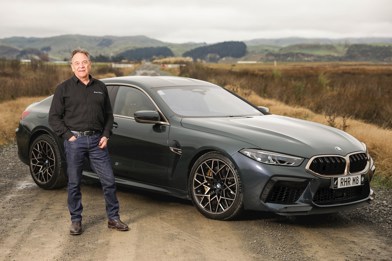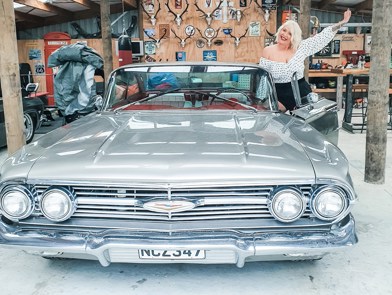READ MORE: EV Buyer's Guide to all HEV, PHEV and BEV in NZ
Hybrid is the buzz word of the clean car era that we’ve recently launched into. And while they’ve commonly been around for 20 years, the buzz around hybrids has only recently started to explode, thanks in large part to the clean car discount. Toyota has basically owned the market, at least in the public sales eyes and models, but possibly the challenger is Hyundai: its Ioniq, Kona and Santa Fe hybrids are now joined by the new Tucson Hybrid (for the phonetically interested, pronounced Too-sun).
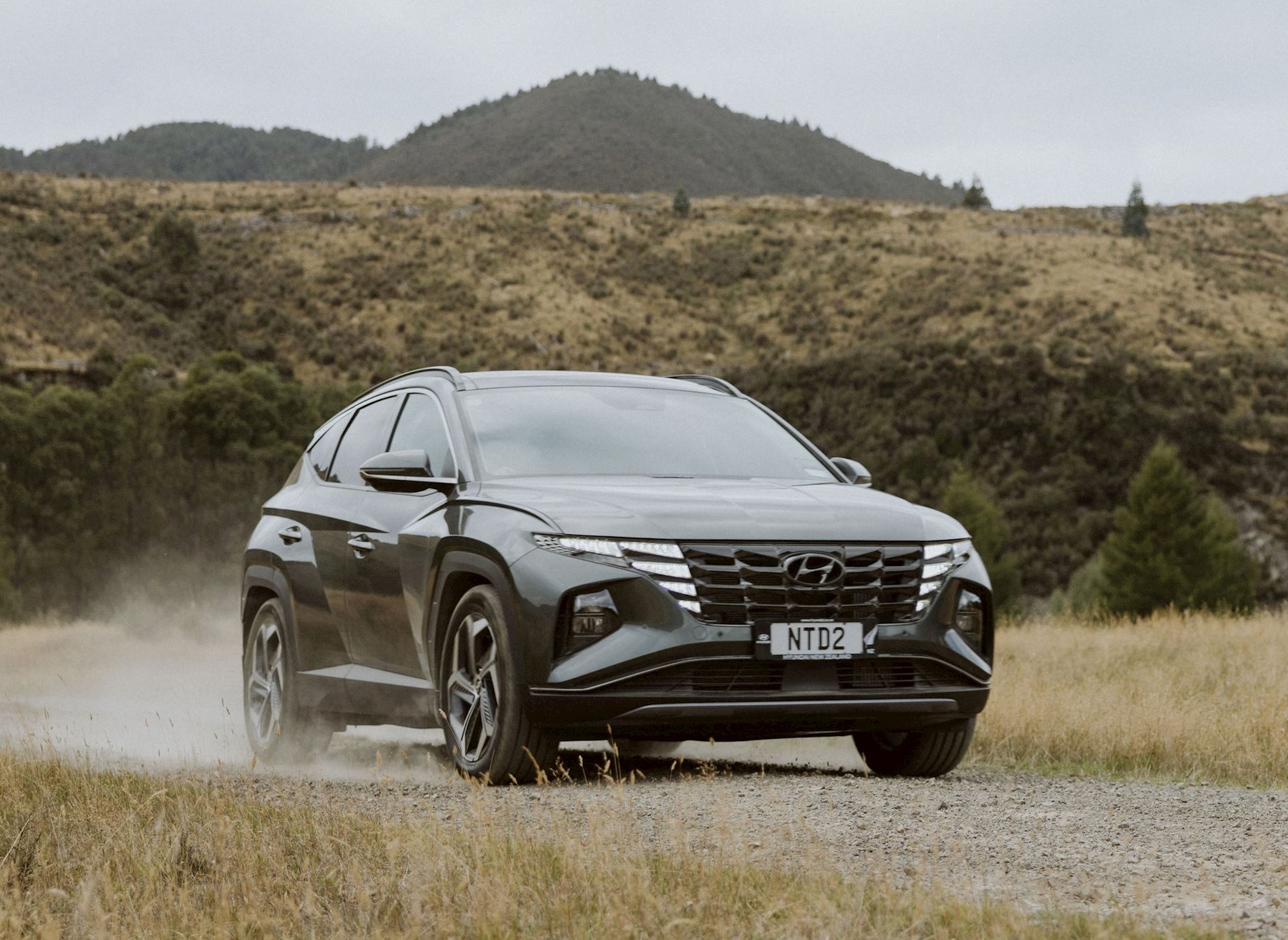
First, the sticker shock: a $10,000 price premium differentiates it from the regular Tucson, less $2902 for the rebate; so a $7000 premium.
We got our hands on the 1.6T Hybrid Elite 2WD, the second model up the four-model range. At $66,990, it’s the highest spec that offers the highest rebate, as the AWD models cashback a lower $2078. The Elite is a $5000 pack that adds leather, larger wheels (17- to 19-inch) and a range of extras. In short, the Tucson Hybrid ranges from $56,990 to $89,990, though with special prices and Clean Car Discounts, that seems to vary wildly.
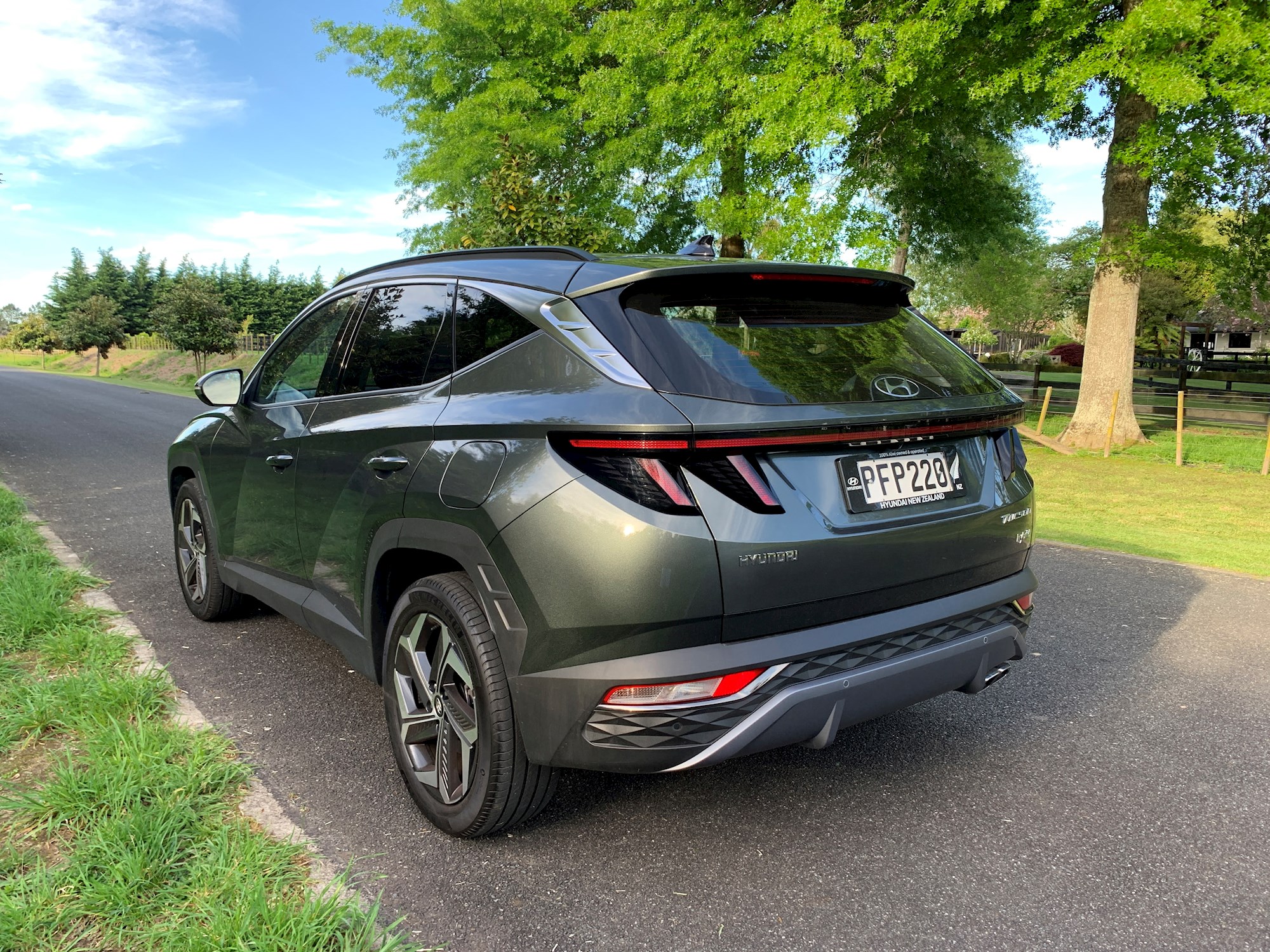
On 19-inch wheels, it’s a decently chiselled and carved lights and vents, it’s a good looker, though the deep greeny Amazon Grey does hide some of its carved sharp body lines and bulges.
All Tucsons run the 1.6-litre petrol turbo four-cylinder, and offer decent around-town performance with adequate torque, for the 1600kg it has to move. The added urge from the electric motor, however, is noticeable and appreciated. A 44kW EV motor offers a smooth serving of extra shove when called upon, and though its 1.49kWh battery is typically small, the hybrid drivetrain is clever when it uses it, often keeping it on EV power alone first thing in the morning, for quiet and clean departures from the home or garage, until it’s on the street. The most distance it typically runs on EV-alone is generally a few hundred metres, maybe even a kilometre.
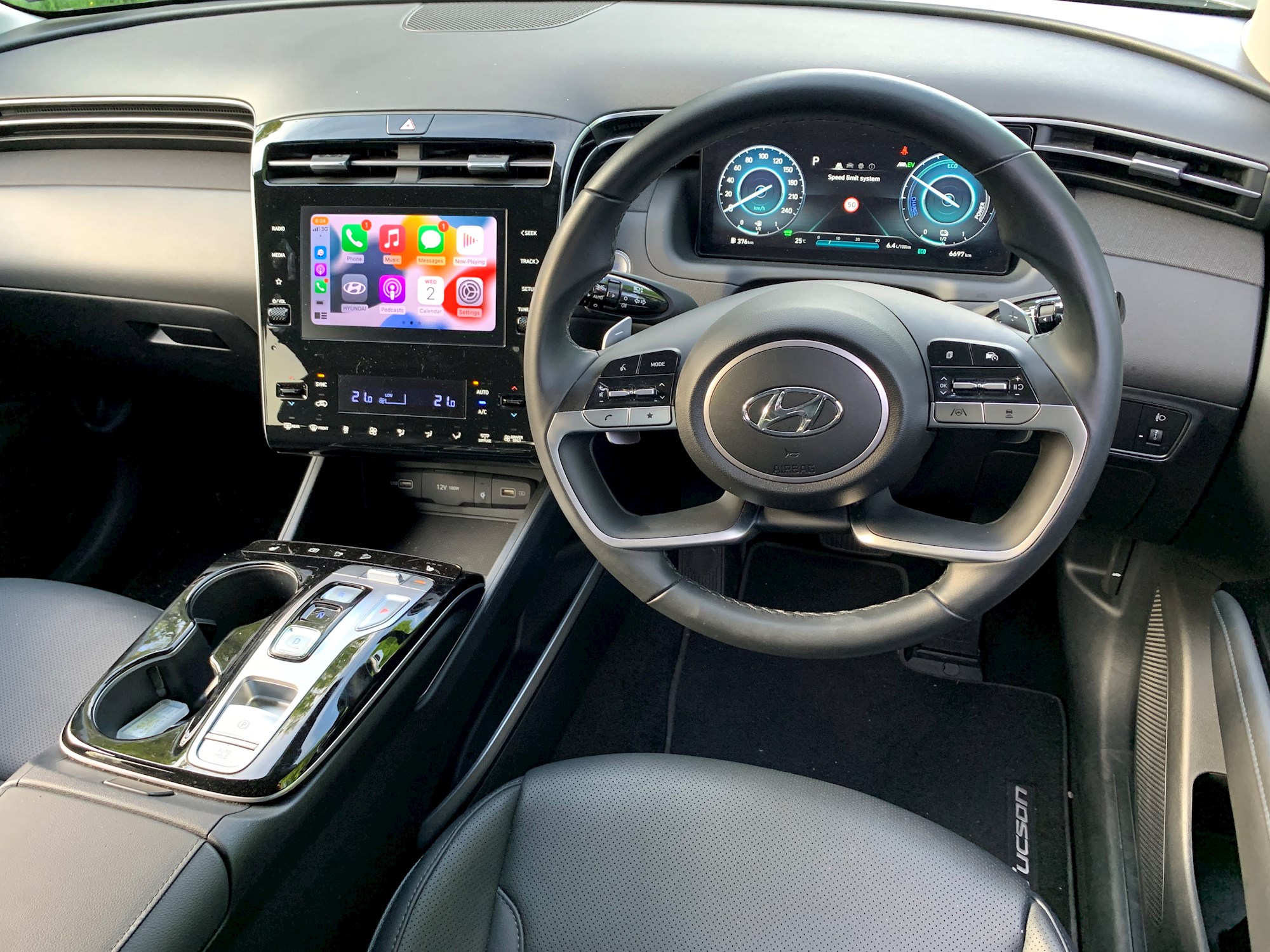
It’s also rather smooth and seamless on the road, too, and manages to quietly slip into and out of EV and ICE modes without increasing the cabin NVH. Normal, Eco, Sport and Smart modes are offered, though we never had a problem with Normal. The 11m turning circle (same as a RAV4) could be a little tighter, but even the lower spec models are fairly well featured with Radar Cruise and Stop-Go, Rear Cross-traffic Collision Avoidance, Safe Exit Assist, Forward Collision Avoidance, reverse camera, Lane Keeping Assist and Lane Following Assist, though the latter two became a bit too beepy and naggy in our week with Tucson and we quickly muscle-memorised the off button on the steering wheel spoke.
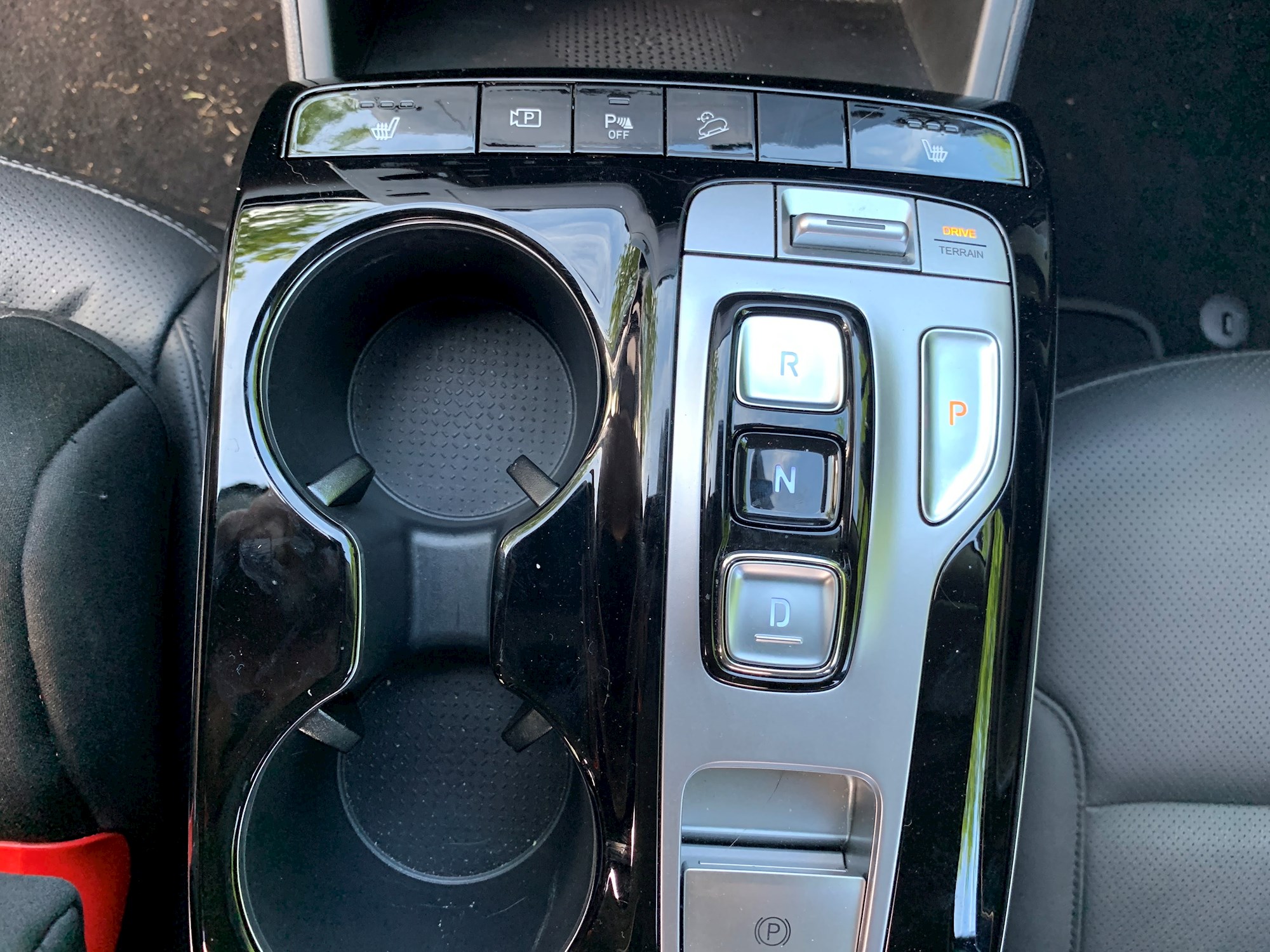
Notable more by their absence was a form of front parking assist, either sensors or camera. The Shift By Wire (SBW) shifter button system is also a bit clunky, having to press separate buttons in slightly separated areas - just not as neat as it could be. And the touchscreen could also be a little larger, with the main screen’s 8-inch display modest by 2022 standards, though complemented by the large 10.25-inch, configurable main gauge digital display.
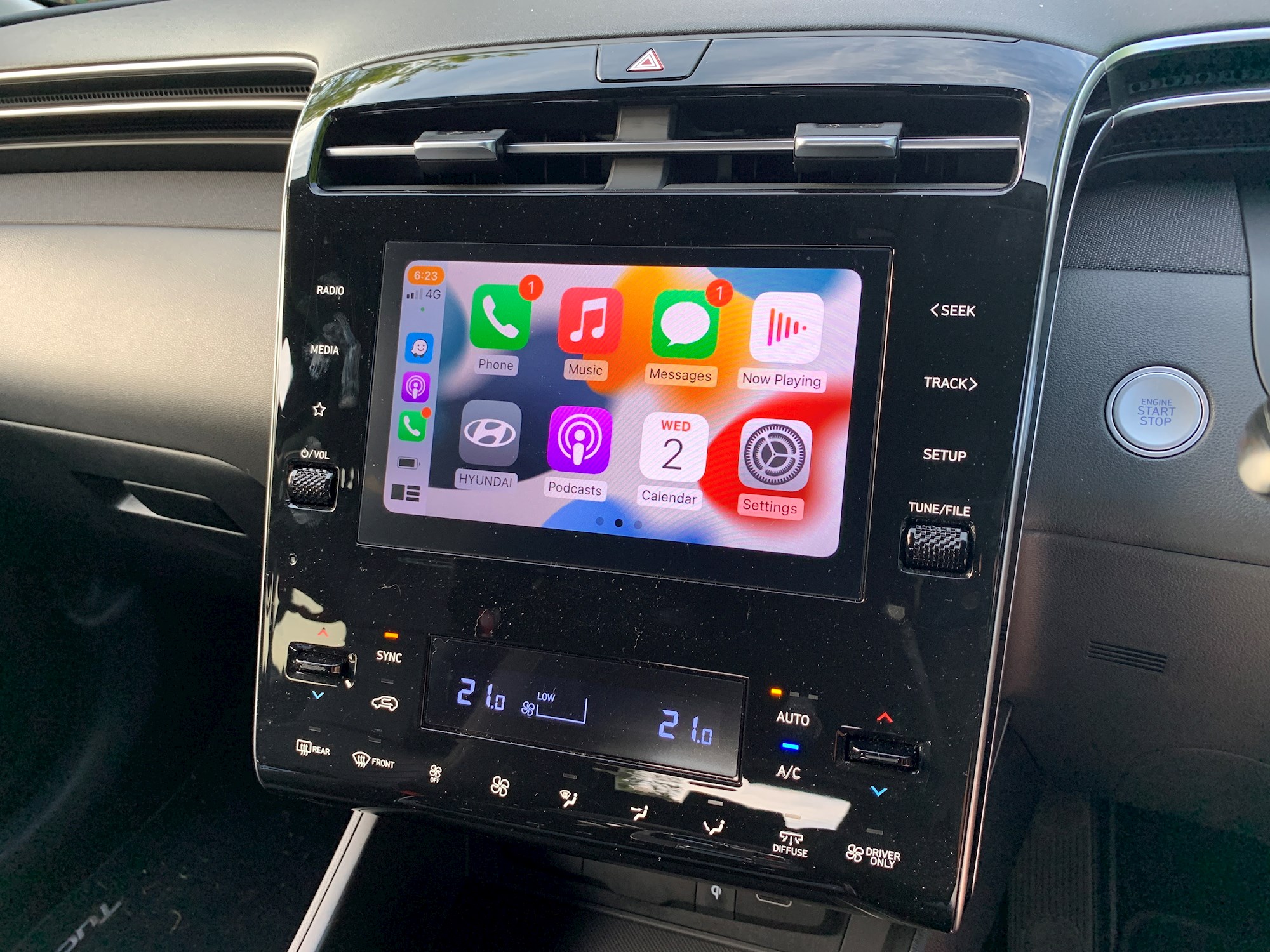
Wireless phone charging and CarPlay and heated seats all made the drive appealing - even the AC has a driver-only mode. And basics, that I personally find a bonus, include the sun-visor extension, that blocks that little pocket of sun that always finds a way through the driver’s-side window.
Tucson Hybrid’s party piece is an Active Air Flap that adjusts air intake depending on the engine coolant temperature, vehicle speed, and more, to minimise air resistance and maximise fuel efficiency. Did we notice it working? No.
And the all-important question of economy? Hyundai claims a figure of 4.9l/100m for the 2WD, though our mix of 80/20 motorway and urban driving resulted in a number of 6.6l/100km, sometimes dipping into the high-fives when conditions were ideal.
Impressively the 2WD model is also the fastest, at 8.0 seconds for the 0-100km/h, with the AWD model adding another 0.3 secs.
The 1650kg towing capacity is also a solid selling point.
Being an SUV, the practical side is also a consideration, and the rear seats are sized well for six-footers, while the 503 litre boot is spacious, with some bins under the floor.
The beauty of the hybrid model of the Tucson, or in fact any hybrid, is its ability to operate like a conventional ICE vehicle: no chargers, no need to think about range or anything, just drive, refuel and drive. But for those ready to step up into the world of battery only Tucson, there is the PHEV plug-in model that offers 56km of EV-only range. But at $90k for the range-topping Elite, we’ll look at that another day.
READ MORE: Hyundai Sante Fe confirmed for NZ
READ MORE: Clean Cars Compared: Hybrid vs PHEV vs BEV
READ MORE: EV Buyer's Guide to all HEV, PHEV and BEV in NZ
Hyundai Tucson 1.6T Hybrid Elite 2WD
ENGINE: 1.6 petrol turbo
ELECTRICS: 44kW electric motor, 1.49kWh battery
POWER: 132kW/265Nm (169kW/350Nm combined)
0-100KM/H: 8.0 secs
GEARBOX: Six-speed automatic
ECONOMY: 5.6l/100km
PRICE: $66,990 (CCD $2902)




















